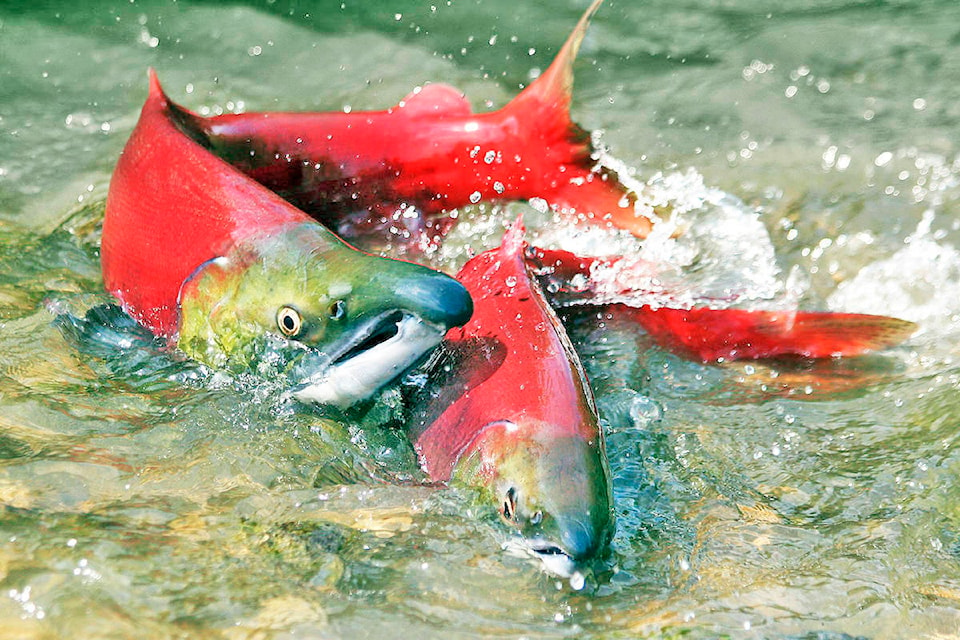The need to ‘daylight’ hidden rivers is a new global development which has already impacted the Okanagan Valley watershed.
Communities, biologists, streamkeepers, students, municipal governments and the Okanagan Basin Water Board (OBWB) have all played a role in recent years helping to initiate projects to begin restoring historic floodplains, and to bring river channels buried under concrete pipes and flutes back above ground again.
“Some people talk of daylighting streams as a reinvention of the ditch but it is a lot more than that,” said Anna Warwick Sears, executive director of the OBWB.
“Climate change is bringing more intense storms our way and the engineering drainage systems put in place are not big enough to accommodate those water flows.”
Warwick Sears says we all need to think differently about controlling sudden water surges, how to rely on nature’s natural ways to curtail excessive flooding that traditional concrete and pipe engineering can’t handle.
Daylighting hidden rivers was the theme of a Canada Water Week virtual presentation Thursday (March 25) that featured a guest panel and screening of a documentary initially released in 2012 called Lost Rivers, which looks at cities around the world that have seen countless rivers buried underground to accommodate population growth.
The presentation was co-sponsored by the OBWB and UBC Okanagan Institute for Biodiversity, Reslience and Ecosystem Services.
READ MORE: Second phase of Fascieux Creek restoration nears completion
In the Okanagan, urban growth has seen residential development imposed on traditional floodplains which naturally absorbed river overflows, while existing creeks and rivers have been manipulated from their natural flows causing negative impacts on the floodplain riparian environment such as Cottonwood trees, water supply and set the stage for infrastructure damage.
“At the core of our guidance from Indigenous elders and the Okanagan Nation Alliance is really to reset our connection to water, which has gone awry,” said Kari Alex, a fisheries biologist and fluvial geomorphologist with the ONA working on the Okanagan River Restoration Initiative.
“The rate of change to natural water flow is actually quite slow. When we channelize a river, we change that from a slow rate to an explosive rate of change. That creates erosion and instability, so we create our own problems with rivers which are hard and expensive to maintain by adding dykes and dredging rivers mouths to keep them flowing.
“A free flowing river is the cheapest form of river you can have…water is the first medicine Indigenous elders talk about and how we have to give it a lot more space and respect than we do in today’s society.”
The documentary examines the history behind why networks of rivers in cities like Toronto, London and Seoul (South Korea) and Brescia (Italy) were covered by modern infrastructure (houses, roads, bridges) and how a group of subterranean explorers known as “drainers” work to reveal these buried waterways and bring them back to light again.
The film also looks at major urban renovation projects to rediscover lost rivers in cities such as Seoul and Yonkers (New York City) that helped revitalize urban centres and rediscover the relationship people have with water.
That rediscovery is taking place across the Okanagan, with long-term projects like the Okanagan River river flow rehabilitation to revive the salmon stocks, and waterways in Kelowna such as Mission Creek, Mill Creek and Fascieux Creek which have seen water flow channels begin to be returned to their natural states and floodplain confinement widened.
READ MORE: Section of Mission Creek upgraded
Darryl Arsenault, fisheries biologist with his own environmental consulting firm, was the project manager for the Fascieux Creek daylighting project on the KLO Middle School site.
Arsenault said a combination of agriculture, transportation and housing development combined to force many natural waterways feeding into Okanagan Lake to be forced underground.
He cited the Brandt’s Creek restoration initiative as part of the downtown Kelowna Canada Lands redevelopment as an example of what can be accomplished.
“We are learning what we have done in the past was the wrong way to think. We need to think of these waterways as a natural asset, an ecological value” that needs to be preserved rather than buried underground.
“(Brandt’s Creek) has become a valuable feature that people can walk and around an enjoy, where fish have returned to.”
But he acknowledged reversing past waterway control decisions face prohibitive costs, noting the example of ongoing restoration work taking place with Mill Creek.
“I am working on project to open up a 30-metre channel of Mill Creek quite a bit right now… so it’s pieces at a time,” he said.
Another guest panelist, Aleksandra Dulic, a UBC Okanagan associate professor of creative studies, talked about UBCO’s Okanagan Waterways project, a multi-media presentation of the historical relevance of waterways in the Okanagan Valley of which she is the principal investigator.
The presentation, to make its public debut in September, follows the theme of water being a healer and life giver as opposed to being a resource to be manipulated and misused.
It will feature historic maps of what the valley watershed rivers were located in their natural states, efforts currently ongoing to restore lost rivers and renaturalize existing waterways, interviews with environment and water experts and offer a vision for the future of water preservation and restoration.
“We are hoping this look at the present and look back at the past will help us see the future… how we can work together and collaborate to protect our environment,” Dulic said.
READ MORE: Sockeye salmon return to Okanagan Lake
Do you have something to add to this story, or something else we should report on? Email: phil.mclachlan@kelownacapnews.com
@newspaperphil
Like us on Facebook and follow us on Twitter.
